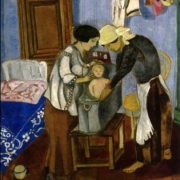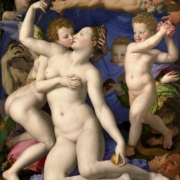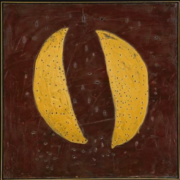Presentation, The Ordering Function of Thought in Folktales
Each of the articles in the volume relates to unique aspects regarding the affinity existing between fairy tales, or tales which share common characteristics with folktales, and the therapeutic process – either individual therapy, or a group workshop. Several articles in this issue deal with the ways in which fairy tales function in the therapeutic process.
The connecting thread of the articles is the use of the fairy tale as a “mediating object” in psychotherapy, as well as in educational situations: fairy tales convey profound topics, both in therapeutic and educational contexts and provide indirect access to these topics. Lafforgue, citing Kaës, defines them as a “prêt-porter” for thinking, emphasizing their “ordering function”. This function enables one to give shape to the phantasms that circulate in human relations, and to break out of the chaos of primitive thoughts. Within the context of fairy tales, emotions are not expressed in a direct manner. Rather, they are invoked by characters that strikingly portray the depths of their being, as if they were incarnations. Associated with this portrayal of emotions is the concept of the “transitional area”, which is created through and by the fairy tale or its precursors -such as a shared dream or any “transitional object” appearing in the relationship. This transitional area enables the transformation of behavior into thought and often serves to set the symbolic processes into motion. (S. Guida, R. Gentile, D. Amir).
Some authors describe the emergence of these aspects of the mind in individual (S. Guida, D. Amir) or group (R. Raufman, R. Zoran, R. Gentile) clinical experiences.
R. Raufman, using psycho-dynamic theories, and N. Peri, drawing upon Jungian ideas, discuss the analogies and relations between dreams and folklore, their complementariness and the possibility of an interdisciplinary relationship between psychoanalysis and anthropology. This complementariness reappears in a different guise in the last article (A. M. Di Stefano and S. Messeca), about archaic songs.
Other articles (Lafforgue, Bruno) highlight the “ordering function” of fairy tales in educational situations, which might be viewed as situations oriented towards empowerment and the preservation of mental health.
1) Susanna Guida: “Dreaming the Unthinkable, Telling the Non-memory” describes the imponderable processes that take place during the emergence of new links from the chaos or during the reconstruction of broken links (Bion), which activate the capacity of narration, the sense of time and historicity, and the renewal of development. Her work, which contains a wealth of pregnant observations, discusses the emotional and cognitive processes which precede the capacity to dream and, later on, upon the use of fairy tales in so far as they belong to a shared tradition.
2) Dana Amir: In her article, “Finding and Hiding: Potential Space and Raspberry Juice’s Home”, presents a psychoanalytic interpretation to a children’s tale dealing with the subject of closure and disclosure. She describes the modality by which this fantasy story for children refers to the need to be discovered, versus the fear of being found, within the potential space described by Winnicott, in which there is the possibility of coming and going between the “me” and the “not-me”, between imagination and reality, between the need to take part and the need to remain singular.
The two initial articles warn the therapist about the risk of hastily and arrogantly “giving a name” to the feelings of the patient, forgetting about the distance between “knowledge possessed by the eyes and the wisdom conquered by the heart”. It is precisely the fairy tale which can perform this function of giving the patient the necessary time needed to appropriate contents which are “difficult to digest” and need to be “discovered” behind their narrative disguise.
3) Ravit Raufman’s article, “Wandering through the Dark Forest: Dreams and Fairy Tales in a Group Workshop” describes the contribution of fairy tales to the dialogue which takes place between the various aspects of the personality and among the therapeutic processes within a group workshop. The example presented in the article deals with the tale of Hansel and Gretel and the ways in which fairy tales and dreams might present a complementary or even compensatory dialogue, similar to the way in which different voices in the group portray the outlines of conflicts and dynamics that the group will be occupied with in the phases to come.
4) The article, “’Back to “Cinderella”: Fairytales in the Bibliotherapeutic Dialogue”, written by Rachel Zoran, also reflects the role of fairy tales as reflecting the dialogue appearing between different aspects of the personality, and enhancing therapeutic processes within a group workshop. The paper examines the role assumed by the Cinderella tale, as if it is a “third voice”, in a therapeutic project of bibliotherapy with a group of youths. Reading the story recreates in the various readers the themes underlying the plot, which serves to clarify each reader as an individual. This double effect creates a fruitful dialogue between the infantile and adult “parts” of the individual.
The ordering function of thought in this project has enabled some patients to elaborate, and perhaps to “correct”, some of their earliest infantile experiences, explaining them from the adult perspective without depriving them of the vitality and authenticity of their first encounter with the tale.
5) Rossana Gentile, in “The Fairy Tale as a Therapeutic Tool: An Experience with the Multidisabled Blind’, draws upon the thoughts of Gaddini (the “fantasies in the body”) and describes the evolution of her workshop with blind multidisabled children, whereby she outlines their first integrations between “body and mind”, feelings and emotions that seem to promote symbolic activity. Much attention is paid to the ways of listening also among the group therapists that begin to see their patients as people, equipped with thinking minds, emerging from the timeless circle of “dirty-clean-dirty”, which dehumanizes human relations.
In her work, as well as in that of S. Guida, Dana Amir and that of Di Stefano and Messeca, there is a strong focus on the theme of the voice’s sound, which inevitably transmits – for the youngest or most ill children – not only the content, but more importantly, the musical quality of narration.
Another group of articles, as mentioned above, deal with the ordering function of the fairy tale in the educational relationship. The work of Lafforgue, “De l’utilité du Conte Populair en Pedagogie”, deals with learning from reading facilitated by fairy tales which, by stimulating curiosity, is perceived as having the ability to open new spaces to the infantile mind.
6/1) Lafforgue seems to be launching an appeal for the protection of books, presenting the book as an object threatened with extinction by the more easily usable screen, which can, however, generate passivity. Fairy tales, as opposed to screens, allow for a sort of “coming and going” – a mental activity which is necessary for the child as an ordering function that enables him to learn important distinctions. Even though he deals with fairly simple and everyday themes, Lafforgue’s article is replete with valuable and original observations.
7) Daniela Bruno, in “The Fairy Tale as an Observation Instrument: The Psychologist Gets into the Class”, develops a discourse similar to the preceding one involving the use of fairy tales at school, allowing young pupils, as well as their teachers, to talk about their anxieties. She draws attention to how the child’s excessive dependence on monitor screens tends to illusorily substitute inanimate objects for human relations. If the desire of knowledge, she says, is compromised by the fears that cannot be contained, then what prevails is the imitation of the fragments of other people’s knowledge.
8) Along with the attempt of Ravit Raufman to exemplify the affinity between folklore products and dreams, the article written by Nethaniel Peri- “The Relationship between Incest and Hubris in Dreams, Myths and Folk Tales¬”, relates to archetypes that are frequently defined as the primary human sins in various cultures – Hubris and Incest – from a Jungian point of view. By examining the ways in which each of these elements appears in dreams, myths and folktales, the author seeks to elucidate the relationships between these two archetypes.
9) The article of A. Di Stefano and S. Messeca, “Archaic Songs for Preserving and Transmitting the Mystery of Birth, Love and Time”, written by an anthropologist and a child psychotherapist, describes – in a similar way to that of S. Guida, but in a different form – the precursors of fairy tales: lullabies and nursery rhymes, which have been orally transmitted from one generation to another. These oral components often contain intense contents, while transmitting thoughts elaborated by tradition in order to initiate the child into a shared culture. The ordering function is performed in the context of existential themes, such as the separation of birth and survival dangers, also including the discovery of the world and life. These songs give form to thought still wrapped in sound.
The extensive range of articles appearing in this volume constitute a rich and articulated body of interpretations and studies, through the “ordering function of thought “inherent in the fairy tale’s very structure. It gives rise to new connections between clinical experiences and theoretical reflections, creating a special contribution to the interdisciplinary dialogue existing between group workshops, dreams, and different kinds of tales.








